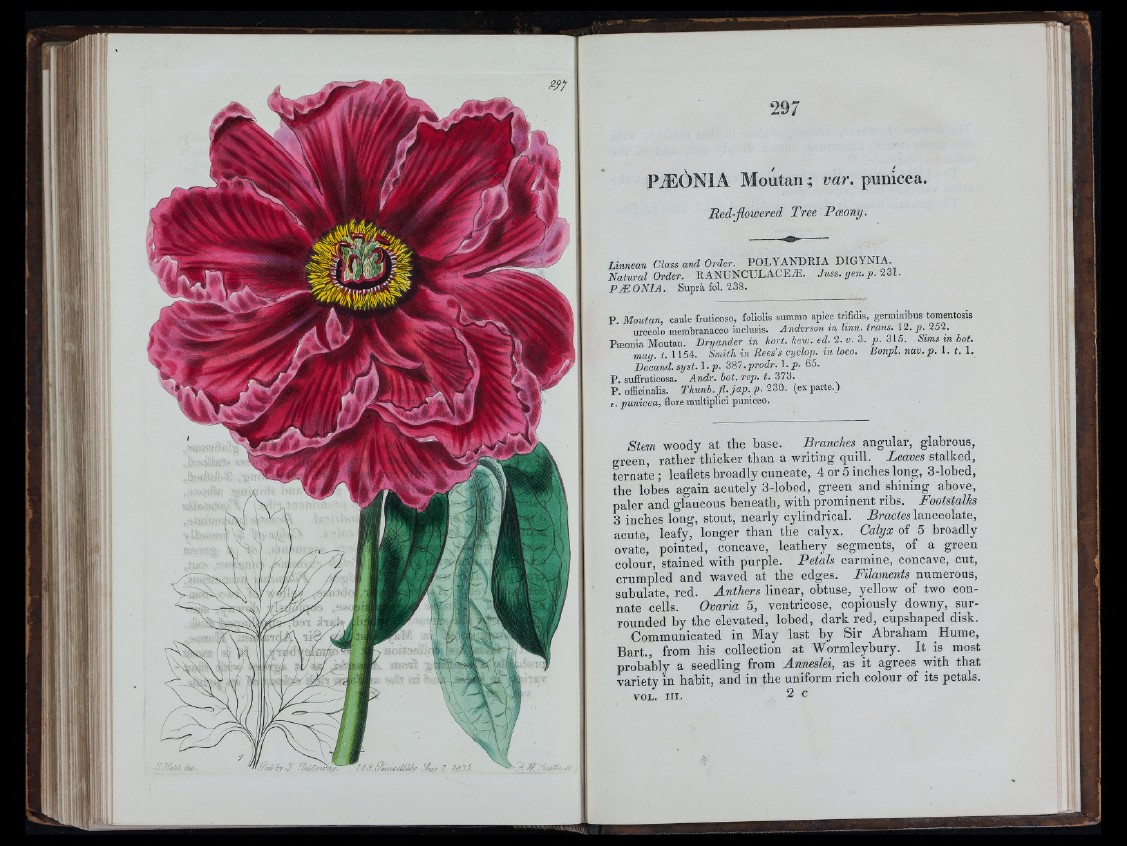
Ò/h'J' l?U4ry^y. ' . 1^/z fóJd.
PiEÒNL\ Aloutan ; vm\ punìcea.
Red-flowered Tree Pceony.
Linnean Class and Order. POLY ANDRIA DIGYNIA.
N a tu ra i Order. RAN UNCU LA C E /E . Juss. gen. p . 231.
P jE O N IA . Suprà fol. 238.
P Moutan, caule fruticoso, foliolis summo apice trifidis, germinibus tomentosis
urceolo membranaceo inclusis. Anderson in linn. trans. 12. p- 252.
Peeonia Moutan. Dryander in hort. kew. ed. 2. v. 3. p . 31,5. Sims m hot.
mag. t. 1154. Smith in R eess cyclop, in loco. Bonpl. nav. p . 1. t. 1.
Decanel. syst. l . p . 381. prodr. \ .p . 65.
P . suffruticosa. Andr. bot. rep. t. 313.
P . officinalis. Thunb. f i . ja p . p. 230. (ex parte.)
t. punicea, flore multiplici puniceo.
Stem woody at the base. Branches angular, glabrous,
green, rather thicker than a writing quill. Leaves stalked,
ternate; leaflets broadly cuneate, 4 or 5 inches long, 3-lobed,
the lobes again acutely 3-lobed, green and shining above,
paler and glaucous beneath, with prominent ribs. Footstalks
3 inches long, stout, nearly cylindrical. _Brac/es lanceolate,
acute, leafy, longer than the calyx. Calyx of 5 broadly
ovate! pointed, concave, leathery segments, of a green
colour, stained with purple. Petals carmine, concave, cut,
crumpled and waved at the edges. Filaments numerous,
subulate, red. Anthers linear, obtuse, yellow of two connate
cells. Ovaria 5, ventricose, copiously downy, surrounded
by the elevated, lobed, dark red, cupshaped disk.
Communicated in May last by Sir Abraham Hume,
Bart., from his collection at Wormleybury. It is most
probably a seedling from Anneslei, as it agrees with that
variety in hahit, and in the uniform rich colour of its petals.
VOL. I I I . 2 c